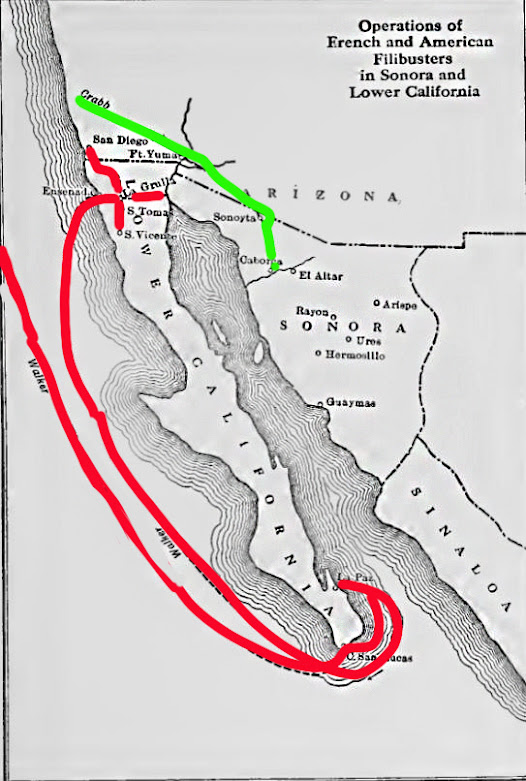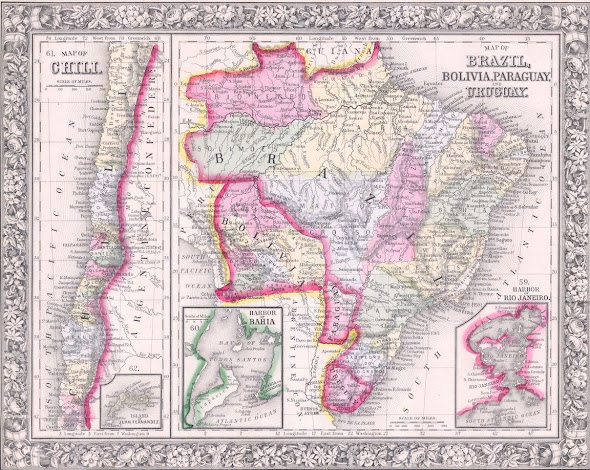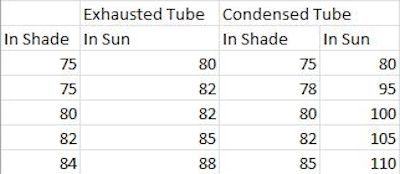Filibuster--when it meant something different
Filibuster--when it meant something different
Filibustering did not always mean
yak-yak-yak in a legislative body to delay passage of a particular law.
William Walker's Route into Mexico in red
In 1852, “filibustering” meant raising a
mercenary army paid with the promise of booty and armed by Southern slave
owners to take over Central American countries, reinstitute slavery, and then
apply for US statehood.
Napoleon’s invasion and subjugation
of Spain in 1809 removed Old World authority over Spain’s colonies in the
Americas, providing opportunity for rebellion and independence. Except for
Puerto Rico, Florida, and Cuba, Spain’s New World colonies freed themselves
under the leadership of Simon Bolivar. Most attempted to set themselves up
nominally as republics, offering men universal suffrage and abolishing slavery.
The new governments were weak, though, unstable, their boundaries and names often
shifting. Beyond Cuba and Florida,
Americans knew little about the new republics; in fact, did not even have
diplomatic relations with most of them.
With the addition of California and
the southwest to the United States in 1848, soon followed by the discovery of
gold in California in 1849, a canal across Central America to speed trade with
California and Oregon was needed. At the time, the quickest way across was to
steam up the San Juan River from Greytown on the Caribbean coast to Lake Nicaragua.
A very narrow strip of land could then be crossed to Rivas on the Pacific
Coast. Both British and French investors
were already negotiating with Nicaragua to build a canal across its territory. Filibusters
argued any canal joining the newly continent wide nation should be American
controlled.
With their tropical and semi
tropical climates, Southern planters saw an opportunity to expand the number of
slave states in the Union. Slave owning Americans could settle and take over
the governments of the newly independent countries. Texas had set a fine
example.
Filibustering was born.
Early filibusters were new Anglo
Californians who believed the US had not annexed enough of Mexico in 1848. Baja
California and Sonora seemed logical additions to the United States.
The most
famous filibuster, and the one that came closest to success, was a charismatic,
slightly built Virginian with gray eyes and lank blond hair. William Walker was unknown to the public when
he showed up in San Francisco in 1850. The publisher of the newly established San
Francisco Herald needed an editor. With polished manners and degrees in
medicine and law, and having recently relinquished his post as editor and part
owner of the New Orleans Crescent, William Walker seemed to be just the
man for the job. Walker had come West because, he said, he believed himself “to
be a man of destiny.” It did not take long before Walker decided editing a
newspaper was not the destiny he was destined for.
He
advertised for bold men to join him in an expedition to expand America’s boundaries
by adding Baja California and Sonora.
By
definition, men who had come to California to find a fortune were bold. Not
everybody could find gold so there was no shortage of volunteers.
In January 1853, contemptuous of
any Mexican resistance, Walker and his band of about 50 followers easily “captured”
thinly populated Baja California. Immediately, with grandiose ambitions, Walker
declared himself President of the Republic of Sonora-- though he never reached
there.
Walker set up a government appointing
various members of his army to the posts of “Secretary of the Navy,” “Secretary
of State,” etc. and
Before he
could send an envoy to the United States from his newly declared republic, the
Mexican Army showed up with over 1,200 men and artillery. Walker knew it was
time to run. He devised a “clever” escape by leading his men along a route too
rugged and dangerous for a large force to follow. It went through Apache
territory and across a desert. Not all his men made it back, but it did work. The
bedraggled group reached San Diego and were arrested by a US Army Captain in
San Diego.
The Federal
government wanted to jail Walker and his crew, but widely publicized by
newspapers—including his own San Francisco Herald, the public lionized
him for his exploits.
Walker’s
brash ambition and courage did not go unnoticed. George Bickley, later founder of a Southern
group of slave owners called Knights of the Golden Circle, approached
Walker with another scheme. The Knights
of the Golden Circle’s plan was to take over Mexico, Central America and most
of the Caribbean and turn them into slave states. Geographically, this would form a “Golden
Circle” with Southern slave states along the northern rim.
They wanted to back him to attempt
to take over the Republic of Nicaragua.
The United States wanted no part of
the scheme—it might provoke a war with France or Great Britain who were sending
ships to safeguard their interests in Central America. It also embarrassed the
US to be the “land of the free” seen taking over weaker states soon after
having pillaged half of Mexico. So many other filibuster schemes were hatched, primarily
to “liberate” Cuba, the US Navy had to stretch its resources farther to not
only supply enough ships to patrol for slavers off the coast of Africa but now
to also set up patrols to catch filibusters off the coast of Central America.
Walker was
not only successful, but he also managed to name himself president of Nicaragua
and hold onto the office for several months (the average term of all of the
country’s presidents.) He immediately re instituted laws permitting slavery.
Finally, Walker over reached. He seized steam boats owned by one of the
world’s richest men, Commodore Cornelius Vanderbilt. Vanderbilt’s fleet was
very profitable taking supplies and miners up the San Juan River to Lake Nicaragua.
Forced to flee Walker was captured and sent back to the United States where he
was widely acclaimed once more. It was not
long before he was back in Central America a second time.
The second
time was not as easy as the first time.
Now, the
small, neighboring republics saw Walker as harbinger of a dangerous trend
threatening their own existence. In the end, the combined armies of Costa Rica,
Honduras, and Nicaragua, overwhelmed Walker’s mercenary band. Fleeing the country again, Walker was
captured by the British Royal Navy. The
British handed Walker over to the restored Nicaraguan government. There, Walker was tried and executed by
firing squad September 12,1860. He was 36
years old.
The Knights
of the Golden Circle disbanded in 1863 when it was obvious their dream of a
slave empire was not to be. The age of filibusters came to an end with the
American Civil War.
The next two blog entries are lengthy accounts published by a Washington, DC newspaper in 1909
after interviewing veterans of Walker’s mercenary armies, as well as some
shorter clippings from contemporary newspaper accounts.







Comments
Post a Comment